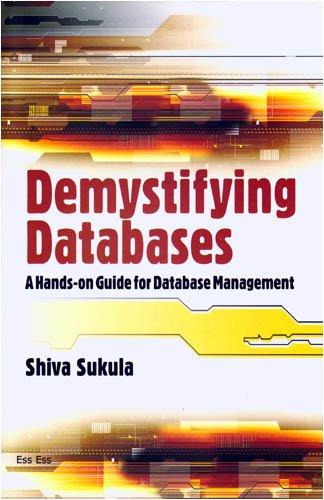Question
PLEASE DO NOT ANSWER THIS QUESTION, I WAS ABLE TO ANSWER MY PROBLEM SUCCESSFULLY AFTER POSTING A FEW HOURS LATER. Chapter 3 Exercise 1 Babylonian
PLEASE DO NOT ANSWER THIS QUESTION, I WAS ABLE TO ANSWER MY PROBLEM SUCCESSFULLY AFTER POSTING A FEW HOURS LATER.
Chapter 3 Exercise 1 Babylonian Algorithm. The Babylonian algorithm to compute the square root of a positive number n is as follows:
1. Make a guess at the answer (you can pick n/2 as your initial guess). 2. Computer = n / guess. 3. Set guess = (guess +r) / 2. 4. Go back to step 2 until the last two guess values are within 1% of each other.
Write a program that inputs an integer for n, iterates through the Babylonian algorithm until the guess is within 1% of the previous guess, and outputs the answer as a doubleto two decimal places. Your answer should be accurate even for large values of n.
INPUT and PROMPTS. The program prints "This program estimates square roots." and then prompts for a positive integer as follows: ("Enter an integer to estimate the square root of: " and then reads in the integer.
OUTPUT. Each time a new guess is computed, the program prints ithe line "Current guess: g", where g is the current guess, printed out with no special formatting. The final output is "The estimated square root of x is y", where x is the integer that was read in and y is the value computed by the procedure described above, printed out to two decimal places and a toal of six characters.
CLASS NAMES. Your program class should be called Babylonia
Need to make the code workable for myprogramming lab. Whoever can answer this be on standby to see if it works in comments.
Step by Step Solution
There are 3 Steps involved in it
Step: 1

Get Instant Access to Expert-Tailored Solutions
See step-by-step solutions with expert insights and AI powered tools for academic success
Step: 2

Step: 3

Ace Your Homework with AI
Get the answers you need in no time with our AI-driven, step-by-step assistance
Get Started


